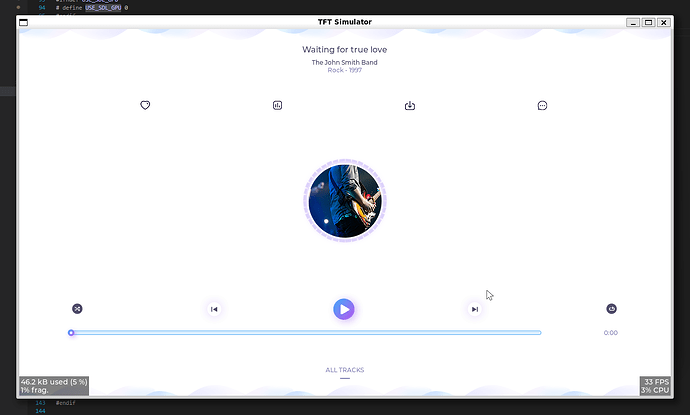Description
When I’m running any lvgl application on my PC with LV_USE_PERF_MONITOR enabled, I see what looks like accurate fluctuations in CPU utilization, but a steady 33FPS. I thought maybe the framerate is pegged at 33 in this mode, but I can’t find anything that suggests that. Furthermore, when running the benchmark demo, I see results that contradict the readout. Does this feature not work correctly when running on PC?
What MCU/Processor/Board and compiler are you using?
PC Simulator on Ubuntu 22.04 on WSL2.
What LVGL version are you using?
8.3
What do you want to achieve?
I’d like the FPS counter to indicate to me the relative complexity of what I’m drawing in simulator mode.
What have you tried so far?
I’ve messed with the lv_tick_
Code to reproduce
Add a code snippet which can run in the simulator. It should contain only the relevant code that compiles without errors when separated from your main code base.
The code block(s) should be formatted like:
int main(int argc, char **argv)
{
(void)argc; /*Unused*/
(void)argv; /*Unused*/
/*Initialize LVGL*/
lv_init();
/*Initialize the HAL (display, input devices, tick) for LVGL*/
hal_init();
lv_demo_music();
// user_image_demo();
while(1) {
/* Periodically call the lv_task handler.
* It could be done in a timer interrupt or an OS task too.*/
lv_timer_handler();
usleep(5 * 1000);
}
return 0;
}
